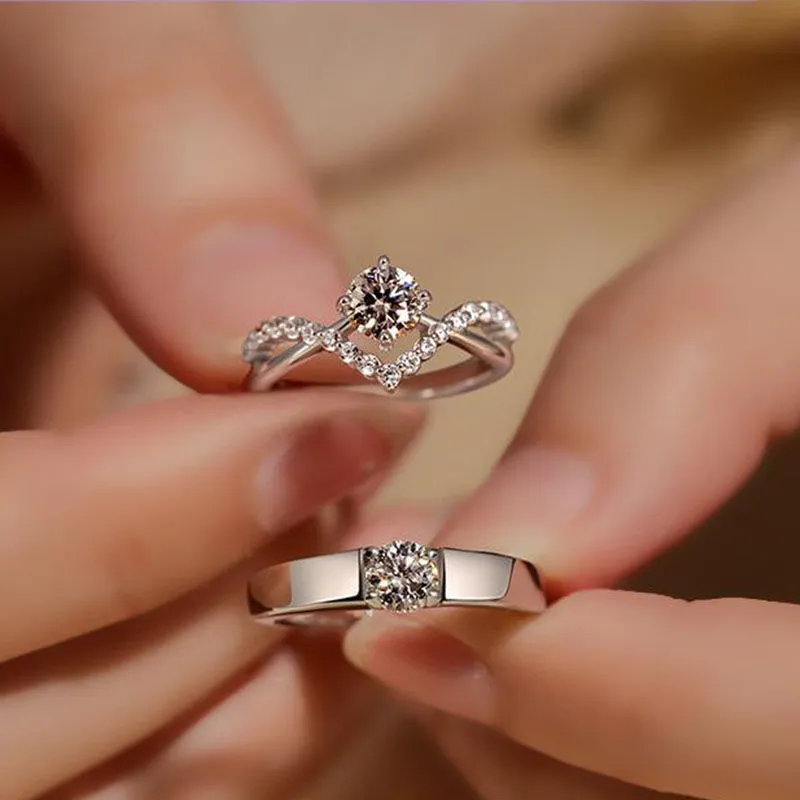Introduction: The Importance of the Claw Setting
Choosing the perfect engagement ring is a big decision, and one of the most important factors to consider is the setting of the diamond. While there are many types of settings available, the claw setting remains one of the most popular options for showcasing a diamond. This setting is known for its timeless appeal, simple design, and effective way of securing the stone. But when it comes to claw settings, there are different options to consider—three, four, or six claws. Each style has its unique advantages, and the one you choose will depend on a combination of factors, including your diamond’s shape, your personal style, and your priorities for security and aesthetics.
Why Ring Settings Matter
The setting of an engagement ring doesn’t just affect its appearance—it also plays a critical role in holding the diamond securely in place. Claws, or prongs, are metal tips that grip the diamond, ensuring that it stays safely positioned. The number of claws used in the setting will determine how secure the diamond is, as well as how much of the stone is visible. But it also influences the overall look of the ring—do you want your diamond to be the center of attention with a minimal setting, or do you prefer a design that features a little more metal drei vier oder sechs krallen?
The Role of Claws in Securing the Stone
Claws are integral to keeping your diamond securely fastened to the band. While most engagement rings feature prongs to hold the diamond, the number of claws you choose plays a key role in how safe and stable the stone is. The more claws, the more secure the stone will generally be. However, this comes with trade-offs in terms of visibility and aesthetic.
Understanding Claw Settings: A Quick Overview
What is a Claw Setting?
A claw setting, also known as a prong setting, is a popular way to secure a diamond in an engagement ring. The diamond is held by metal “claws” or prongs that wrap around the stone. These prongs can vary in number—typically three, four, or six—and they hold the diamond in place while allowing light to pass through the stone for maximum brilliance.
Why Choose a Claw Setting Over Other Options?
Claw settings are loved for their ability to show off the diamond to its fullest. By using prongs, the diamond sits higher off the band, allowing light to reflect from all angles. This increases the stone’s sparkle and gives the ring a more open, airy feel. Additionally, claw settings are versatile and can be adjusted to fit different diamond shapes and styles.
The Three-Claw Setting: Simplicity and Elegance
What is a Three-Claw Setting?
In a three-claw setting, the diamond is secured with three metal prongs. The prongs are strategically placed around the diamond to hold it in place, with the most common configuration being one prong at the top and two on the sides.
Benefits of a Three-Claw Setting
Simplicity and Elegance: The three-claw setting offers a minimalist design that is both modern and timeless. With fewer prongs, the diamond is more exposed, allowing light to enter the stone from multiple angles, which enhances its brilliance.
Visual Appeal: The three-prong setting is often seen as more delicate and elegant, highlighting the diamond’s natural beauty without too much metal surrounding it.
Ideal for Which Diamond Shapes?
Round Brilliant: A three-claw setting is a great choice for round diamonds, as it allows the stone to shine with maximum brilliance.
Oval and Pear-Shaped Diamonds: These shapes can also look stunning in a three-claw setting, as the prongs don’t obscure the elongated facets, allowing the diamond to stand out.
Drawbacks of a Three-Claw Setting
While the three-claw setting is beautiful, it does come with some drawbacks. The lack of prongs means that the stone is less secure compared to a four or six-claw setting. This can be a concern for those who plan on wearing their ring daily or for those who want added peace of mind regarding the security of their diamond.
The Four-Claw Setting: Classic and Secure
What is a Four-Claw Setting?
In a four-claw setting, the diamond is held in place by four prongs. The prongs are usually placed at the four corners of the diamond, offering a secure and balanced grip on the stone.
Benefits of a Four-Claw Setting
Maximum Security and Stability: With four prongs, the diamond is much more secure compared to a three-claw setting. This makes it ideal for people who want a bit more protection for their stone, especially if they have an active lifestyle.
Versatility in Diamond Shapes: The four-claw setting works well with almost every diamond shape, from round and square to marquise and cushion-cut. It’s a versatile option that accommodates a variety of styles.
Drawbacks of a Four-Claw Setting
More Metal Coverage: While four prongs offer extra security, they also cover more of the diamond, which means less light can pass through the stone. This can slightly reduce its sparkle compared to a three-claw setting.
The Six-Claw Setting: Ultimate Security and Visual Appeal
What is a Six-Claw Setting?
A six-claw setting features six prongs evenly spaced around the diamond. This style is often used for larger stones or when maximum security is required.
Benefits of a Six-Claw Setting
Superior Diamond Security: With six prongs, the diamond is held in place with ultimate stability. This setting is ideal for those who want their diamond to stay securely in place at all times.
Adds Extra Elegance: The six-claw setting can also add an elegant, luxurious feel to the ring, making it perfect for people who want a ring that stands out and makes a statement diamantenschliff arten.
Drawbacks of a Six-Claw Setting
Visibility Issues: Like the four-claw setting, the six-prong design can obscure more of the diamond, which can affect the stone’s overall brilliance. It’s a trade-off between security and visual appeal.
Choosing Between Three, Four, or Six Claws: What You Need to Consider
Security vs. Aesthetics
When choosing between three, four, or six claws, it’s important to consider what matters most to you—security or aesthetics. If you want your diamond to be as secure as possible, a six-claw setting is a great choice. If you prefer a more delicate, minimalist look, a three-claw setting might be the way to go.
The Diamond Shape and Size
The shape and size of your diamond will also play a big role in the decision. Larger stones may require more prongs for extra security, while smaller stones may look better with fewer prongs. Certain diamond shapes may also suit certain claw settings better.
Personal Style and Preferences
Your personal style and lifestyle will ultimately influence your choice. Do you want a classic, timeless design, or something more contemporary? Do you wear your ring every day, or only on special occasions?
How Claw Settings Affect the Overall Ring Design
Claws and Ring Band Styles
The number of claws you choose will also influence the overall look of the ring band. For example, a four or six-claw setting pairs well with a thicker band, while a three-claw setting might look better with a more delicate band.
How Claws Affect the Light Performance of the Diamond
Claw settings are designed to let as much light as possible pass through the diamond, enhancing its sparkle. However, the number of prongs can affect this light performance, with fewer prongs allowing for more light entry.
Other Popular Settings: A Brief Comparison
Prong vs. Bezel vs. Tension Settings
While the claw setting is one of the most popular choices, other settings like the bezel setting and tension setting offer unique advantages and looks. Understanding these can help you make a more informed decision.
Halo Settings and Their Claw Variations
Halo settings, which surround the center stone with smaller diamonds, often use a claw setting for the center stone. This setting can add extra sparkle and visual appeal.
Why the Right Claw Setting Matters for Engagement Rings
How the Right Setting Enhances Diamond Beauty
The right claw setting not only ensures the diamond stays secure but also highlights its brilliance and beauty. Each setting has a unique effect on the way light interacts with the stone, affecting its overall appearance.
Ensuring Durability and Safety of the Stone
The setting you choose will also affect the durability of your ring. A well-secured diamond is less likely to become loose or damaged over time, so it’s important to prioritize security.
Conclusion: Which Setting is Right for You?
Choosing between a three, four, or six-claw setting ultimately comes down to your priorities—whether that’s security, aesthetics, or both. Take the time to consider your lifestyle, preferences, and the diamond shape to find the perfect setting for your engagement ring. With the right claw setting, you can ensure that your diamond not only looks stunning but also stays securely in place for years to come.







Weather Situations When H11/H8/H9 LED Headlight Bulbs Be Used
How To Live The Happy Live As A Wheelchair User
Why Prefer Eat Verification Website?
Fenix International Limited stock: what you need to know
How to Set Up The Perfect Home Office